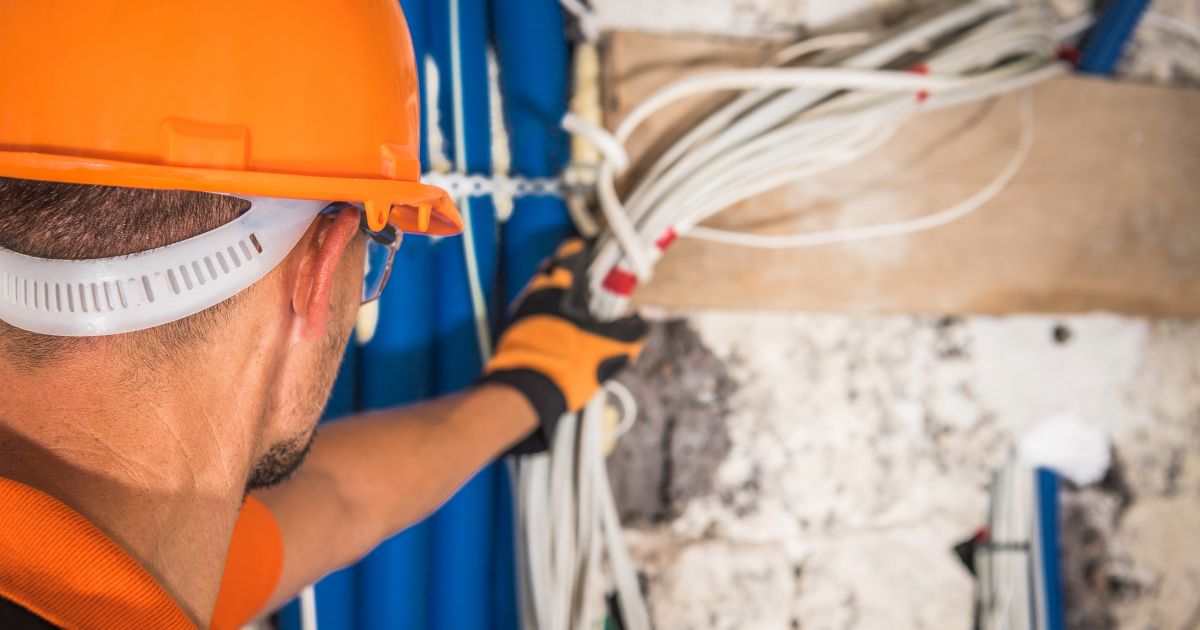Working in the construction industry is one of the toughest jobs there is. With the fast-paced environment and at times laborious conditions, construction workers must always be cautious to keep themselves and others safe from injury. Electrical injuries are a major concern in all workplaces, but especially in the construction field, where it is the third leading cause of workplace fatalities.
Although they are not always fatal, electrical injuries can cause serious and often debilitating damage that can keep a construction worker out for weeks, if not months. And all workers in the construction field work with or near electricity; it is not just the electricians and their apprentices who are at risk.
Making contact with just two amps of electricity is enough to cause a serious injury. The most common electrical injuries that a construction worker suffers are:
- Burns: According to the Occupational Safety and Health Administration (OSHA), burns are the most common type of electrical injury for construction workers. Contact with electricity can cause serious burns. Some burns are not apparent at first. However, some burns are so severe that they are disfiguring and may take months to heal or will need reconstructive surgery. Furthermore, electrical burns can damage the tissue to the point of infection, which could lead to amputated limbs.
- Cardiovascular: Heart problems are common with electrocution. Electricity attacks the heart’s ventricles and can disrupt the cardiac rhythm or cause fluttering, which is fatal if not treated immediately. Cardiovascular injuries after electrocution can lead to future heart problems.
- Central nervous system: Electrical injuries to the central nervous system happen mainly after the victim falls, causing additional injuries such as seizures, nerve damage, or spinal cord, neck, or head injuries.
- Musculoskeletal: Electrocution victims are likely to fall after being shocked, causing additional injuries such as fractures or broken bones, or internal organ damage.
- Psychological trauma: Victims of electrocution often go through intense and long-lasting treatment, which can lead to anxiety and depression.
- Respiratory: Explosions from an electrical arc can create enough pressure that it could cause inner ear and lung damage. Electricity can pass through the chest, as well as the part of the brain that controls the respiratory system, which can often lead to respiratory arrest and death.
What Causes Electrical Injuries at Construction Sites?
Each year, about 1,000 people lose their lives due to an electrical injury. However, construction workers are at risk the most; according to a report by the U.S. Bureau of Labor Statistics, over 60 percent of all United States workplace electrocution fatalities occurred in the construction industry.
The most common causes of these electrical injuries in the construction industry are:
- Contact with live power lines: Overhead or buried power lines have very high and dangerous levels of voltage. Coming into contact with them, either through physical touch or with tools or equipment that can conduct electricity, will often lead to disastrous results.
- Failing to provide ground-fault protection: Over time, the cords on electrical equipment will wear down and lead to insulation breaks and exposed wires. Without proper checks before use and not wearing correct safety equipment, a worker could come into contact with the exposed electrical current, leading to injury, or even a fire or explosion.
- Path-to-ground issues: When equipment or tools are not grounded properly or the path has been broken, this can cause problems with the power supply of the equipment, which would then cause current to travel to the user’s body, causing injury.
- Not using equipment properly: It can be extremely dangerous when using electrical equipment in manners that they were not originally designed for, such as using indoor equipment like power strips outdoors, or using the wrong rated circuit breaker.
- Improper use of extension cords: Electrical cords wear down over time, which leads to exposed wiring.
The severity of electrical injury is based on a number of factors, including how long the individual was exposed to the current, how much current and voltage, and if moisture was present including the skin.
How to Prevent Electrical Injury at the Construction Site?
Recently, OSHA released their Focus Four Hazards for construction, and electrocutions are one of the most significant hazards. The Focus Four Hazards also included falls from elevation, struck-by objects, and caught-in between objects. Electrocutions are just as prevalent as the other three hazards.
Here are a few suggestions in preventing electrical injury:
- Training: Be sure that all workers are trained and educated in electrical safety, and that they understand what is hazardous and what could happen if an electrocution happens.
- Inspection: Have routine inspections of the job site to identify potential electrical hazards before work starts.
- Protection: Provide each worker with personal protective equipment (PPE) and make sure they are being worn. Examples of electrical PPE include face shields, safety helmets, safety glasses, and gloves, and should protect against electrical shock as well as accidental contact.
- Qualifications: Only use qualified electricians to work on electrical systems and be sure that electrical cords should never be repaired unless done so by a qualified and authorized person.
- Power lines: All workers should stay at least 10 feet away from overhead power lines, and workers should have the appropriate PPE when working around or near power lines. Never use any type of metal near power lines, as they could act as a magnet to an energized power line.
- Energized sources: Always alert workers and provide the necessary signage whenever there is exposed wiring, energized equipment, or unfinished electrical systems. Always deenergize high voltage lines whenever possible.
- Extension cords: Inspect all power cords and protect them from damage. Secure them away so they do not come in contact with liquids, be tripped over, get cut or yanked, or be damaged in any other way.
- Small spaces: Small, cramped spaces such as crawlspaces or attics increase the risk of an electrical injury, as workers can be in close contact with wiring or circuits.
- Warning signs: Be sure to have clear signage and markings to warn workers of the presence of electrical hazards. Mark entrances with warning signs of there are exposed wiring in the vicinity and identify each electrical source and mark them.
Cherry Hill Workers’ Compensation Lawyers at Pietras Saracino Smith & Meeks, LLP Help Workers Suffering from Electrical Injuries
If you or a loved one has experienced an electrical injury at the workplace, you may be entitled to further compensation. Our experienced Cherry Hill workers’ compensation lawyers at Pietras Saracino Smith & Meeks, LLP can help. Our knowledgeable team has years of experience and can help you get the compensation you deserve. Call us today at 856-761-3773 or fill out our online form for a free consultation. With our offices located in Cherry Hill, New Jersey, we proudly serve all communities of Camden, Cinnaminson, Delran, Maple Shade, Pennsauken, and South Jersey.













